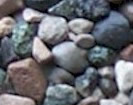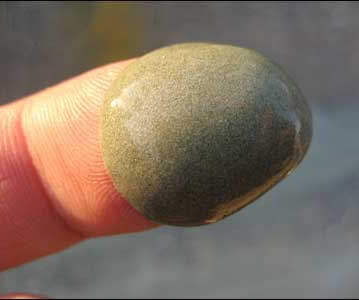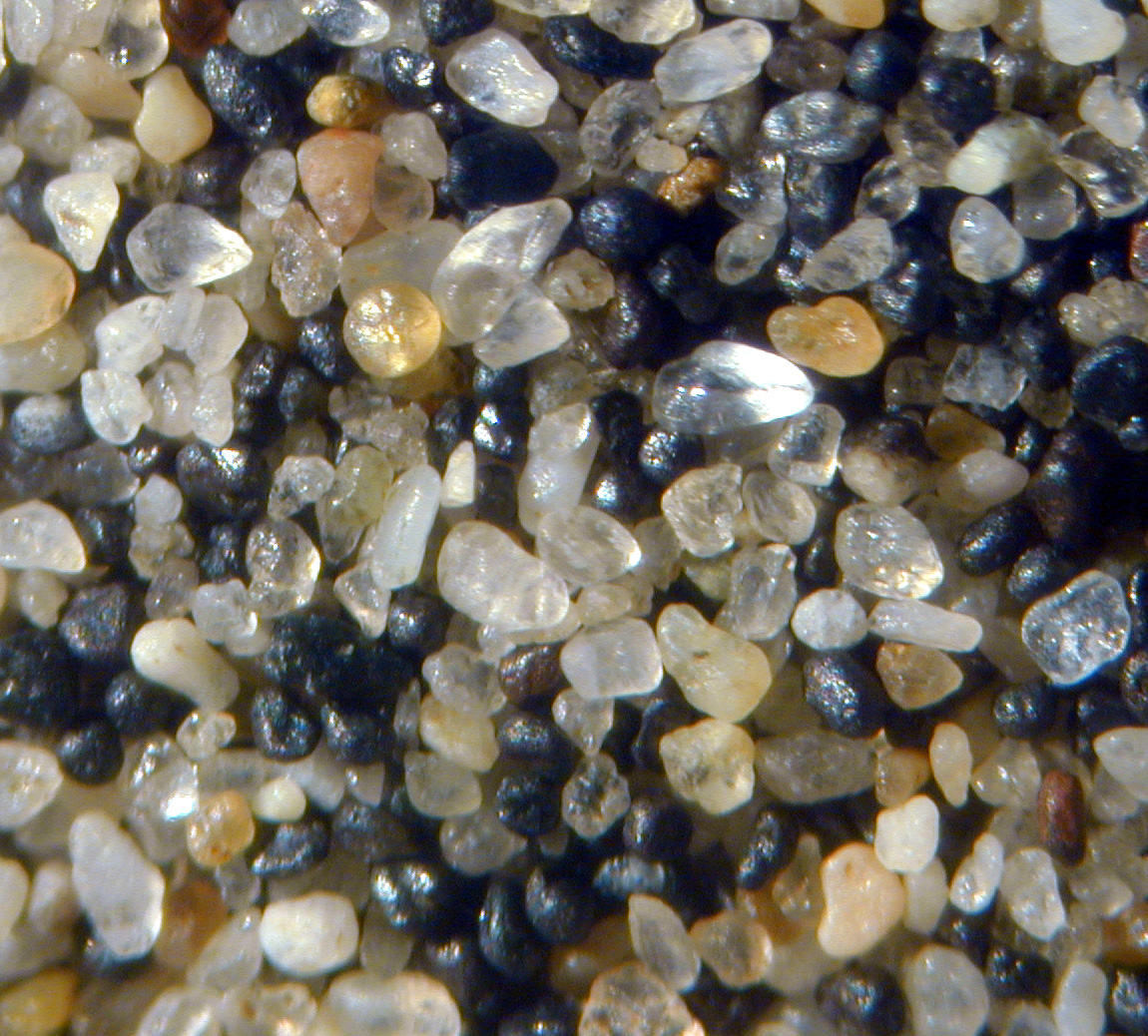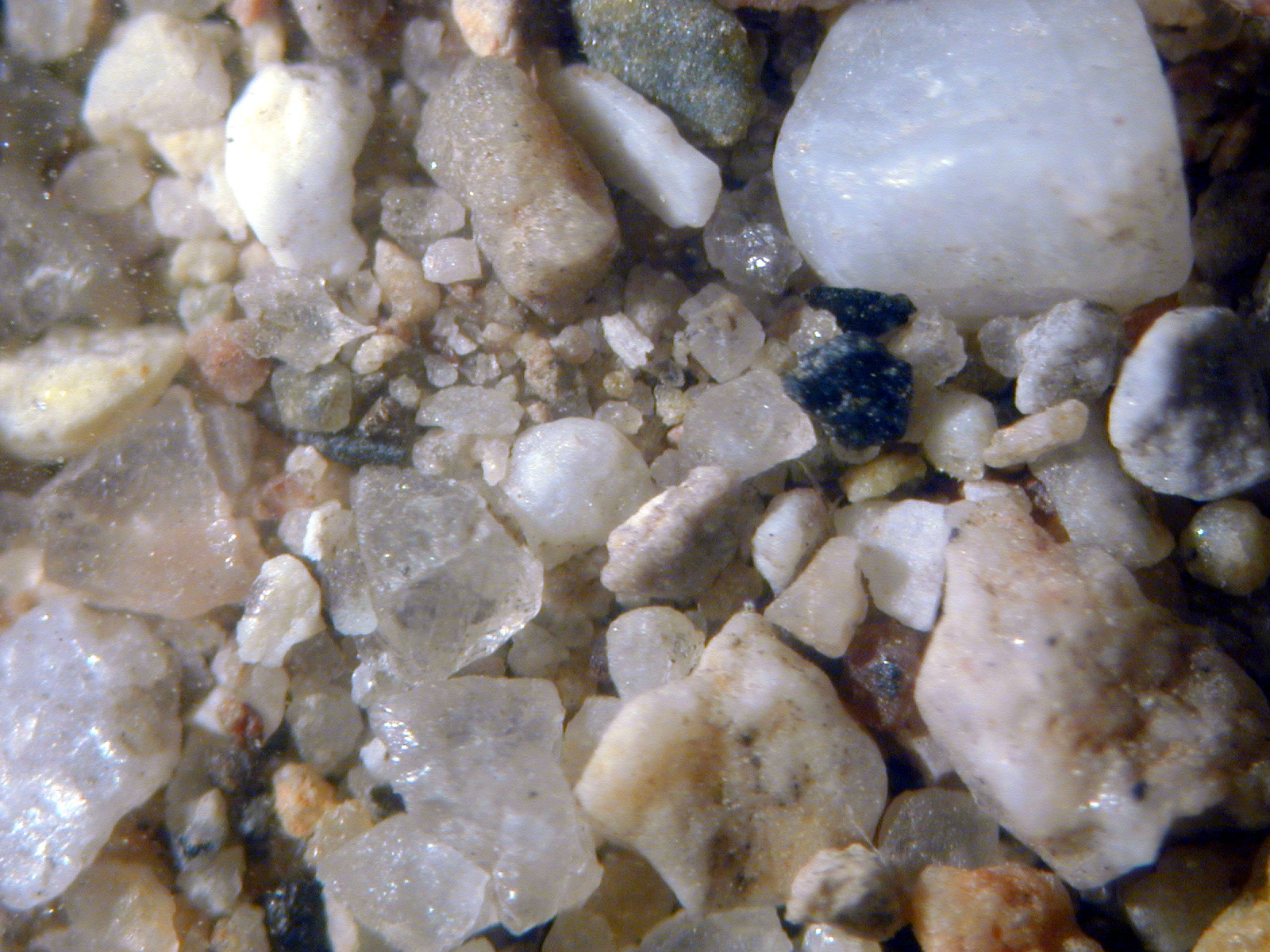Clast Size & Sorting
When studying sedimentary rocks, the one of the most obvious aspects will be the particle or clast size. Determining whether a sedimentary rock is composed of sand-sized, silt or clay, or gravel is the first step in identifying clastic sedimentary rocks. The following table defines these terms based on average particle diameter.
Gravel Sand Silt Clay greater than 2mm
0.0625mm- 2.0mm
0.0039mm-0.0625
Less than 0.0039mm
For general purposes of identification, it is not usually necessary to measure individual sediment grains since the texture of the rock and visual observation will help identify the grain size.
Transport of sediment is determined by both the particle size and the process by which it is being transported. The most common forms of transport are wind and water; the velocity of either force will determine the greatest particle size able to be transported. In other words, the faster the water, the bigger the particle that can be transported.
Therefore as the velocity decreases particles will begin to drop out based on size. This natural separation of sediment based on size is known as sorting. Sediment that is well sorted will be composed of material that is all similar in size. Poorly sorted sediment, however, will be composed of sediment of all different sizes.
Well Sorted Sediments Poorly Sorted Sediments
In general well sorted sediments are typically deposited by moving water or wind. Poorly sorted sediments, on the other hand, are typically deposited by gravity or through glacial action.






